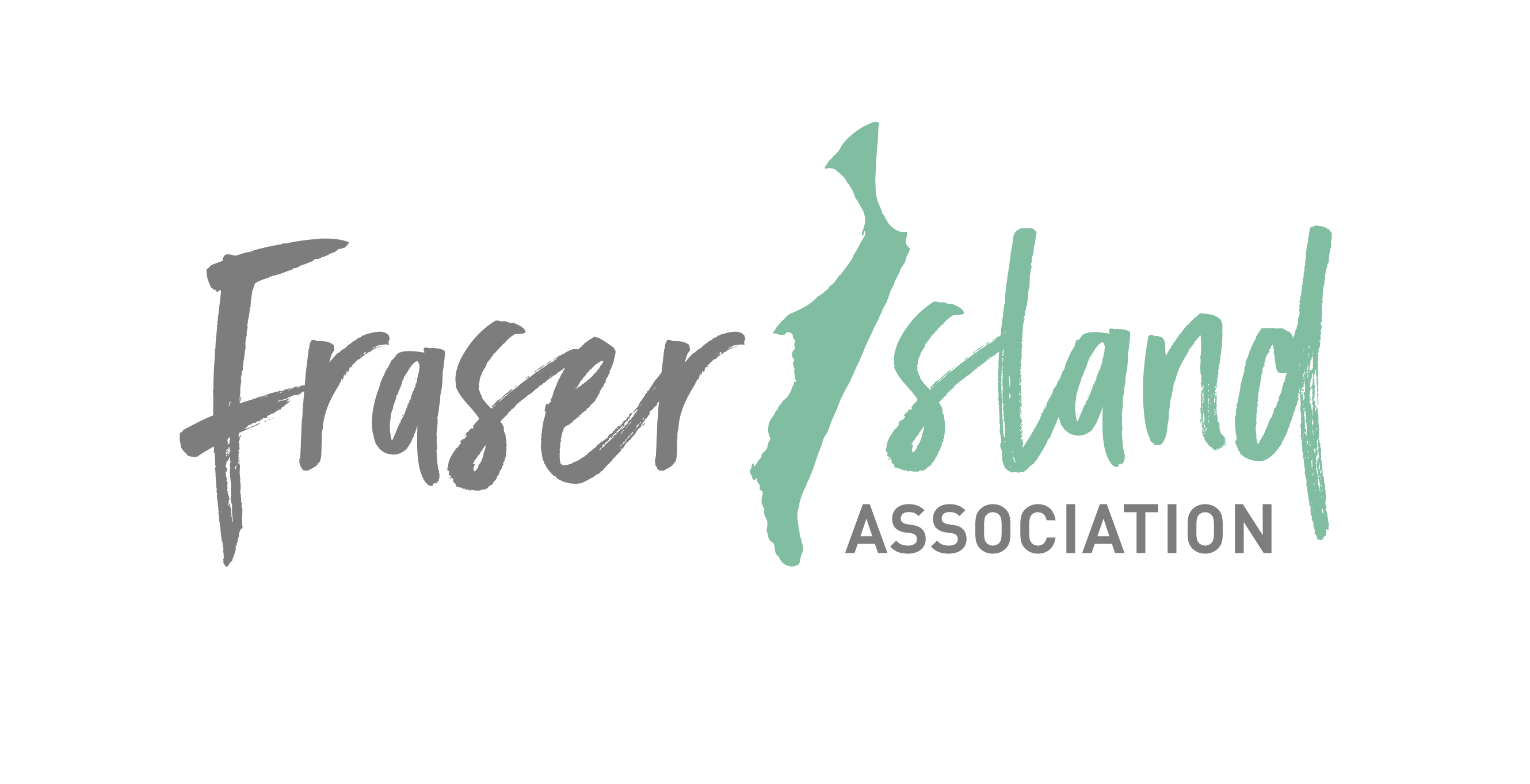Skip to content
The Fraser Island Association works in alliance with many other
FINIA is a collaborative partnership of stakeholders which undertakes campaigns to raise public awareness of the management of environmental issues on Fraser Island. Fraser Island Natural Integrity Alliance (FINIA) was formed after a 2-day workshop on Fraser Island’s weeds and pests facilitated by the Burnett Mary Regional Group for NRM in December 2005. Participants included the State Government, Fraser Island Defenders Organisation (FIDO), National Parks Association of Queensland (represented by the late George Haddock), the Cooperative Research Centre for Weed Management, Hervey Bay City Council, Sandy Cape Lighthouse Conservation Association and the Traditional Owners of Fraser Island, the Butchulla people.
During the workshop, it became clear that issues relating to land tenure were affecting the ability to address natural resource management issues in the World Heritage Area and that greater collaboration was needed. At the end of the workshop, the participants formed the Fraser Island Natural Integrity Alliance (FINIA) to address issues that were threatening the future sustainability of Fraser Island’s natural environment.
Although the Alliance’s initial focus was weeds and pests – it has expanded its activities to include vegetation, sediment, marine turtle and even dingo scat monitoring and broader community engagement through demonstration gardens (using plants endemic to Fraser Island).
FINIA has grown (and continues to expand) attracting several new partners, all committed to maintaining and improving the Island’s natural integrity. The Alliance is also supported by Queensland & Parks and Wildlife Service.
FINIA is a means to bring stakeholders together to implement common goals with respect to often differing organisational objectives, in a proactive and respectful manner.
Our members are also represented at the Fraser Island World Heritage Community Advisory Committee which comprises of Ms Sue Sargent (Chair), Mr David Anderson, Mr Glen Miller, Mr John Sinclair, Mr David Hay, Ms Shirley Blake, Ms Gemma Cronin, Cr George Seymour, Mr Luke Barrowcliffe, Ms Emma-Kate Currie, Dr Kim Moreland and Mr Paul.
FIDO is more than just an environmental advocate; it puts in physical effort where its mouth is. FIDO has contributed thousands of hours of voluntary effort controlling weeds in the areas of worst weed infestation.
QPWS has significant expertise and experience in managing protected areas, forests and wildlife. This experience is supported by scientific research, which provides an increasing array of tools that can be used to help identify conservation priorities, appropriate management techniques, and insights into the conservation challenge’s Queensland may face in the future. Tools and techniques include research and monitoring, managing threats and pressures, protecting habitats and working with the community through partnerships.
Legislation and policies are important tools that provide the framework for the protection of the environment and its inhabitants. The key pieces of Queensland legislation that QPWS operates under include:
-
The Nature Conservation Act 1992 which provides for the conservation of nature through the protection and management of places, such as national parks, and native wildlife.
-
The Marine Parks Act 2004 which provides for planning and protection of the marine environment through multiple-use marine parks.
-
The Forestry Act 1959 which provides for the protection and management of forests and their resources.
-
The Recreation Areas Management Act 2006 which provides for the establishment, maintenance and use of recreational areas.
A range of Commonwealth legislation also supports and influences QPWS activities, including the Environment Protection and Biodiversity Conservation Act 1999, the Great Barrier Reef Marine Park Act 1975, and the Wet Tropics World Heritage and Protection and Management Act 1993.
QPWS works under many international guidelines and agreements for conservation management, in partnership with the Australian Government, other state governments, and with local governments. This engagement helps to ensure that the collective conservation effort of all parties is coordinated. Australia is a signatory to the international agreement, the Convention on Biological Diversity and QPWS play a key role in ensuring the protection of these unique places and species.
Incorporating kilometres of unspoiled coastline, heritage listed destinations and a unique natural environment, the Fraser Coast is a vibrant and diverse community home to 92,000 residents. Spanning an area of 7,125 km2, the region boasts a richly colourful, history and a promising future, striving towards sustainable economic and community development.
Their mission is to work towards achieving their vision by sustaining our unique natural environment, building a dynamic region, maintaining a healthy community and establishing a smart customer-oriented organisation.
